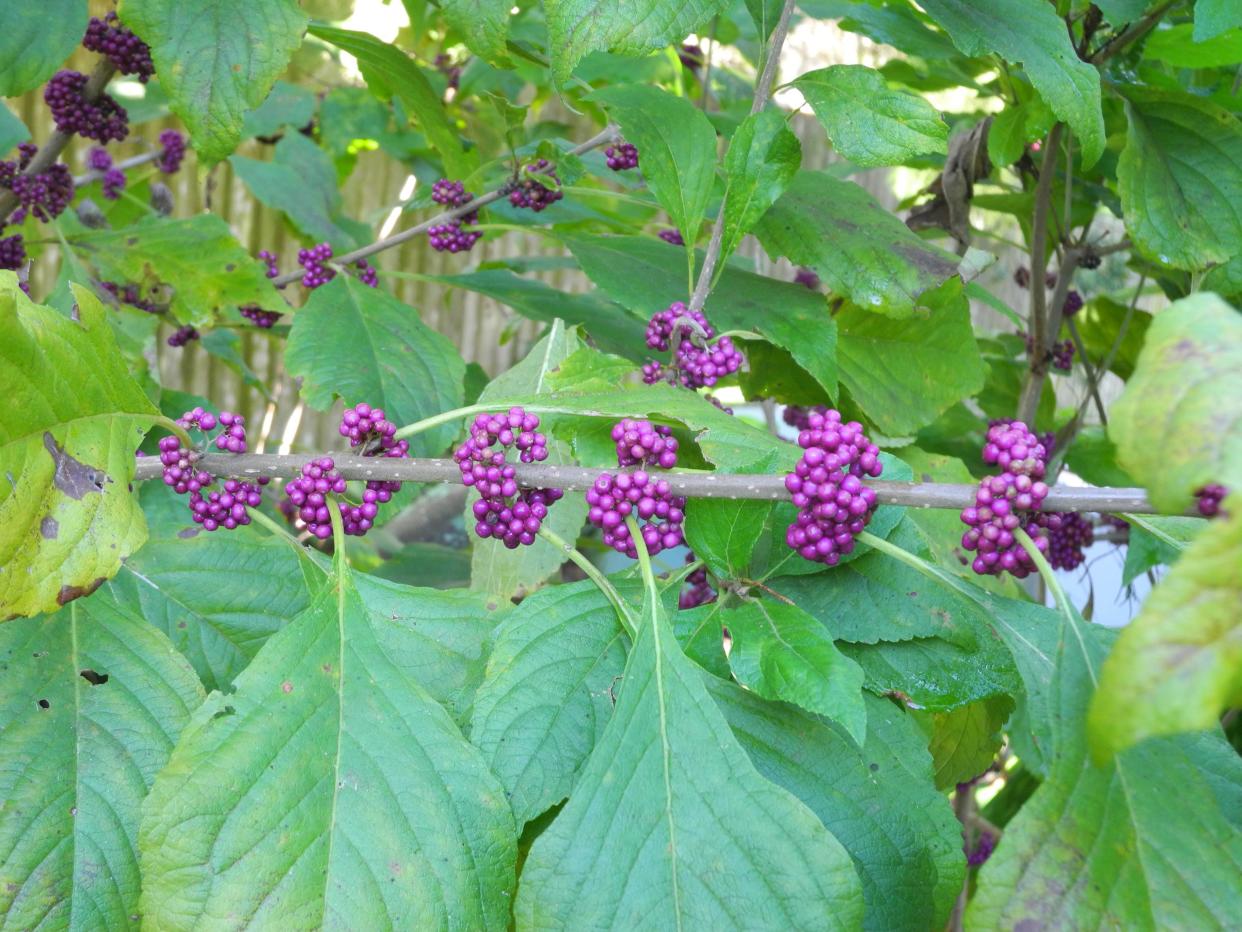Fruit-bearing plants add winter color to your landscape

There is something very special about nature in the way that the most colorful seasons are when plants are first waking up and then when they are going to sleep. Spring is when most of our trees and shrubs produce flowers. Fall is when the foliage of all the trees and shrubs change color.
In my opinion, fall is the most colorful of the two seasons. In the spring only certain trees and shrubs have significant, prolific flowers. In the fall the colorful foliage is everywhere.
Fall is also a season where many fruit-bearing plants create interest by adding color to the garden and landscape. In addition to their visual appeal, they are often a food source for wildlife in the fall and through the winter. Here are a few of my favorites.
Callicarpa “Beautyberry" has a very appropriate name. Massive quantities of small, bright purple fruits appear along the slender, arching branches following clusters of small pinkish-lavender blooms. An easy to grow hedge or foundation plant, one of the best ornamental fruiting shrubs.
Aronia “Chokeberry” are native plants; members of genus that includes several varieties. There are varieties growing in different sizes. They have either black or red berries. In addition to the berries, they have bright red and orange fall foliage. They are called "chokeberries" because when humans eat the berries, they have a mouth-drying effect. This does not happen with wildlife, as they are very attractive to birds.
Viburnum is a large family of shrubs with many varieties to choose from. The varieties with the most significant fruit are "Arrowwood Viburnum" with bluish black fruit, and the "Cranberry Viburnum," with a self-descriptive name producing bright red fruit. Many varieties of viburnums are also native to our area. They are also great for supporting wildlife.
Winterberry Holly is a deciduous variety of holly. This means it is not evergreen. It drops its leaves in the fall. After the leaves drop, the shrub enters a new phase of beauty as the stems are covered with bright red berries. The fruit is held into the winter and is especially attractive when there is a bright white background of snow. For fruit on these hollies, you do need to have both a male variety along with a female that produces the berries. Only one male is needed as he will be able to pollinate multiple female shrubs.
Northern Bayberry is a native variety with fragrant, dense foliage on a compact form. This shrub is useful for hedges and screens. The white waxy coating on the small blue fruits is used for candle making. This plant is considered a "semi-evergreen" because it will hold its foliage in mild winters.
Flowering Crabapple is a family of plants with different varieties to choose from. These are trees with options for size and shape. Crabapples have a bad reputation with some people because older varieties produced fruit that was messy as it would drop to the ground. One of the greatest benefits of the newer varieties is that the tree holds the fruit into the winter. As the fruit is held, the birds will clean it off through the winter.
As we focus on the berries of these plants, let’s not forget that before a plant produces a berry it must first produce a flower. I really like plants that have appeal in multiple ways. All of these plants will fit this description.
This article originally appeared on Cincinnati Enquirer: Fruit-bearing plants add winter color to your landscape

